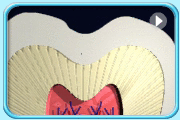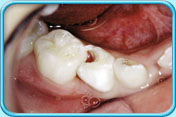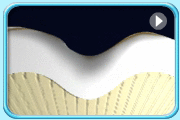Tooth decay refers to loss of minerals from tooth structure caused by bacteria.


 |
The tooth surfaces are frequently covered with dental plaque. Every time food or drinks are consumed, the bacteria in the dental plaque will metabolise the sugars in the food to produce acids, which will demineralize the tooth surfaces. |
 |
Although saliva can neutralize the acids and slow down the demineralization process, it takes a long period of time to do so. |
 |
If we eat and drink frequently, the acid cannot be adequately neutralized by the saliva, and the continuous demineralization will eventually result in the formation of tooth decay. |